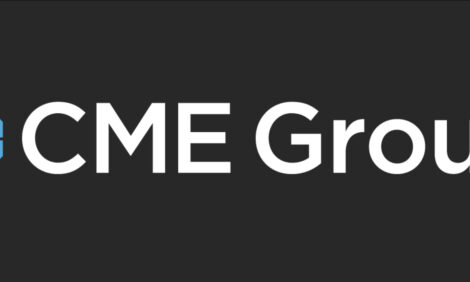



Weekly Roberts Market Report
US - CORN futures on the Chicago Board of Trade (CBOT) closed up on Monday. MAR’13 corn futures closed at $7.200/bu; up 3.0 ¢ /bu but 14.0 ¢ /bu less than this time last week. The DEC’13 contract closed at $5.620/bu; up 0.25 ¢ /bu and 8.0 ¢ /bu higher than last report.Futures were supported by fund buying and position squaring. Corn futures would have made more headway but dismal demand projections weighed on prices as cattle feeders have cut back. Like it has been said, “The best thing for high prices is high prices.” In addition, crude oil and energy prices have lost ground forcing large funds to rebalance portfolios as we have pasted the middle of the month. This is drawing money out of the markt. Although there are some bulls in the corn pits they are not the major players. Exports continue bearish with USDA putting corn-inspected-for-export at 15.339 mb vs. estimates for 10-15 mb. This was well below the 17.4 mb needed to stay on pace with USDA’s export demand projection of 825 mb. Please see chart:
Corn Export Inspections

Corn cash prices were weaker Monday amid increased farmer selling. The national average basis for corn was steady-to-firm at +11.0 ¢ /bu over CBOT nearby May futures; even with Friday and 1.0
¢ /bu lower last report. Producers should consider holding off on pricing any more of the 2013 crop. Producers should considere pricing another 5% of the 2013 crop.
SOYBEAN futures on the ChicagoBoard of Trade (CBOT) closed down on Monday. The MAy’13
contract closed at $14.094/bu; down 16.5 ¢ /bu. NOV’13 futures closed at $12.584/bu; up 2.5
¢ /bu but 11.75 ¢ /bu lower than last report. A lower U.S. dollar was supportive but a lower-than-expected crush report weighed on prices even though the old crop supply situation is still considered tight. Exports are considered bullish with USDA putting soybeans-inspected-for-export at 8.927 mb vs. estimates for 17-22 mb. This was just above the 7.2 mb needed to stay on pace with USDA’s export demand projection of 1.345. bb. Please see chart:
Soybean Export Inspections

The strong soybean basis this time of year, along with the steep inverse in futures indicates tight supplies are not keeping up with demand. Cash soybean prices were 29.0 ¢ /bu higher than a week ago. The latest national average soybean basis was placed at -7.0 ¢ /bu under the Chicago May 2013 futures contract; up 1.0 ¢ /bu but even with last report. Producers should consider pricing up to 25% of the 2013 crop at this time and not have any old crop soybeans unpriced.
WHEAT futures in Chicago (CBOT) closed up on Monday. MARY’13 wheat futures finished at
$7.126/bu; down 10.75 ¢ /bu. The JULY’13 contract closed at $7.130/bu; down 8.25
¢ /bu but 11.50 ¢ /bu lower than a week ago. A lower U.S. dollar was supportive. USDA pubt wheat-inspected-for-export at 3.947 mb vs. estimates for 21-27 mb. Short covering on an oversold market were supportive. Dry weather conditions also increased worries that supplies could be tightening. Wheat basis firmed with the Soft Red Winter wheat basis index placed at -18.0
¢ /bu under CBOT May futures; up 2.0 ¢ /bu from last report. Hard Red Winter Wheat basis index firmed 2.0 ¢ /bu -29.0 ¢ /bu under Kansas City May futures; up 2.0 ¢ /bu. Hard Red Spring Wheat average basis index was placed at -22.0 ¢ /bu under the Minneapolis May futures; up 1.0 ¢
/bu. Some price strength is indicated by chart signals but only in the short run.
DAIRY CLASS III futures on the Chicago Mercantile Exchange (CME) closed up on Monday. The
MAR’13DA contract closed at $16.95/cwt; even with Friday’s close and $0.20/cwt lowerthan last report. MAY’13DA futures closed at $17.86/cwt; up $0.21/cwt and $0.15/cwt higher than this time last week. The JULY’13DA contract closed at $18.73/cwt; up $0.19/cwt and $0.30/4cwt over last report. Pit sources remained mostly neutral after erasing lower prices from late last week. Long-liquidation and shortcovering offset eath other. The announcement to discontinue the monthly milk production report got quite a bit of attention today with risk managers wondering how they would make timely decisions. Spring flush in milk production is making itself felt with some production being re-routed to other parts of the country. Cheese prces were gainers over last week with 14 loads changing hands. Production remains strong. Butter stocks indicate some cream supply is tightening. “March Madness” and Easter cooking has picked up demand. Class III futures are: 3 months out = $17.25/cwt ($0.09/cwt lowerthan last week); 6 months out = $17.87/cwt ($0.05/cwt lowerthan last report); 9 months out = $18.09/cwt ($0.04/cwt under last report); and 12 months out = $18.02/cwt ($0.04 lowerthan last Monday). Hopefully feed needs out to
4 weeks were purchased last week. This week the variable cost of production for the average North Carolina conventional 200 cow dairy with a 22,000 lb average is $23.16/cwt with a slight increase in milk price. The price sensitivity table below shows better milk prices are aiding dairy farm profitability and illustrates different returns/cow relative to varying increases and decreases to both milk prices and inputs costs over total Variable Costs for the same NC farm.
Price Sensitivity Analysis
Percent Change in Total Gross Receipts

Dairy producers should seriously consider buying feed needs out to 4-6 week’s needs. If you have any old crop soybeans or corn left in the bin you should very seriouslyconsider selling it and cleaning out the bins.
LIVE CATTLE futures on the Chicago Mercantile Exchange (CME) closed up on Monday. APR’13LC
futures closed at $126.050/cwt; up $0.275/cwt but $2.075/cwt underlast report. The AUG’13LC contract closed at $122.575/cwt; up $0.050/cwt but $2.075/cwt lowerthan a week ago.Cattle futures rebounded from sharp losses last week as traders covered short positions. Short-covering on an oversold market was supportive. Fundamentals continue the statusquo. Even though the market’s retail supply/demand picture remains bleak cash prices made some gains in early trading. Demand remains sluggish in this economy as consumers look for lower priced protein. Animal weights continue heavy amid mild weather conditions. Cash cattle were steady-to-weaker as processors had plenty of supplies for this week. Late Monday USDA put the boxed-beef cutout at $195.84/cwt; $0.08/cwt over last report. The latest HedgersEdge packer margin was lowered $2.40/hd over last week placed at a positive $0.55/head based on a $127.29/cwt buy vs. a breakeven of $127.33/cwt. Grain users should have bought a month’s feed needs
last week. Cash cattle were up $1/cwt with USDA putting the 5-area average at $126.62/cwt; 1.16/cwt lower than last report. Please see chart:
5-Area Weekly Steer Average

FEEDER CATTLE at the CME finished up on Monday. MAR’13FC futures closed at $136.700/cwt; up
$0.025/cwt but $1.500/cwt lowerthan last Monday. APR’13FC futures closed at $139.400/cwt; up
$0.300/cwt but $1.975/cwt underlast report. The AUG’13FC contract closed at $148.225/cwt; up
$0.200/cwt but $2.1023/cwt lowerthan this time last week. Feeders were limited after posting new
contract lowes amid significant losseslinked to spillover selling from the live pit, poor commercial
demand, and further strength in the corn market. Very little cash trading was done and not much more is expected until Tuesday. For Monday 03/18/13 estimated receipts at the closely watched Oklahoma City market were put at 9,500 head vs. 9,133 head last week and 7,502 head this time last year.Compared to last week feeder steers and heifers were $1-$3/cwt lower. Demand was considered moderate for feeder cattle. Steer and heif The CME feeder cattle index for er calves were mostly $30$6/cwt lower amid light volume. The CME index for Monday 3.18.13 was estimated at 136.93/lb; down 0.26/lb and 0.84/lb lower than last Monday’s report. Please see chart:
CME Feeder Cattle Index


This table shows the maximum price a producer could pay for feeder cattle and still break even, assuming the costs and conversion/performance factors listed above. Producers should remain aware that calculations are based on averages. Courtesy DTN.
LEAN HOGS on the CME closed up on Monday. The APR’13LH contract closed at $81.150…
79.400/cwt; down $0.275/cwt and $1.75/cwt lower than last Monday. MAY’13LH futures closed at $88 .800/cwt; down $0.400/cwt and $.70/cwt underlast report. The JUN’13LH contract closed at
$88.950/cwt; off $0.375/cwt and $1.90/cwt lowerthan last week at this time. Lean-hog futures ended lower, as weak export demand and concerns about domestic consumption hang over the market. Sluggish export demand continues amid global weakness and softened domestic consumption. Most grillers are bypassing pork for poultry and fish. Additional pressure over renewed concerns that the European economic community can recovery suffieicently to increase exports is growing. On the other hand, China, the worlds biggest consumer of pork, has been buying domestic supplies to support its own producers.
Cash hog prices were weaker-to-$1/cwt lower in most places. Most slaughter houses have contracts for needs through mid-week. Early projections for Saturdays’slaughter were around 40,000 head; down from last week’s 86,000 head. Late Monday USDA put the latest pork carcass cutout at $79.58; up $0.53 and $0.73 higherthan a week ago. The latest HedgersEdge packer margin was raised $2.95/hd placed at a positive $5.55/head based on a $54.62/cwt buy vs. a breakeven of $56.62/cwt. The latest CME two-day lean hog index was placed at 76.78/lb; down 0.30/lb and 1.04/lb lower than last report. As with other commodities, large fund managers are taking funds out of commodity markets quickly enough to hearthe sucking sound.
Hog Margin - Breakeven


This table shows the maximum price a producer could pay for feeder pigs and still break even, assuming the costs and conversion/performance factors listed above. Producers should remain aware that calculations are based on averages. Courtesy DTN.
2013 December Corn, March 18, 2013







